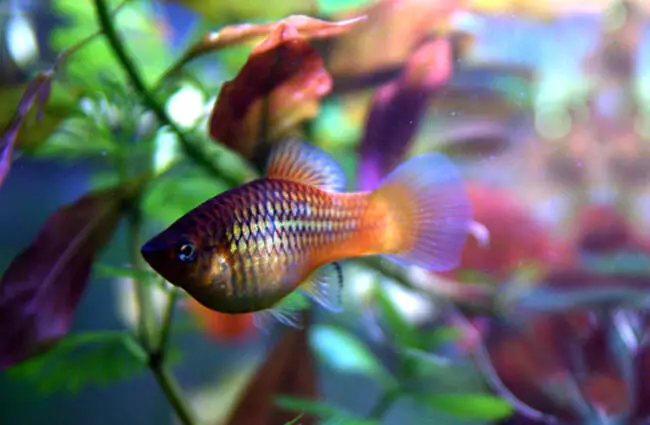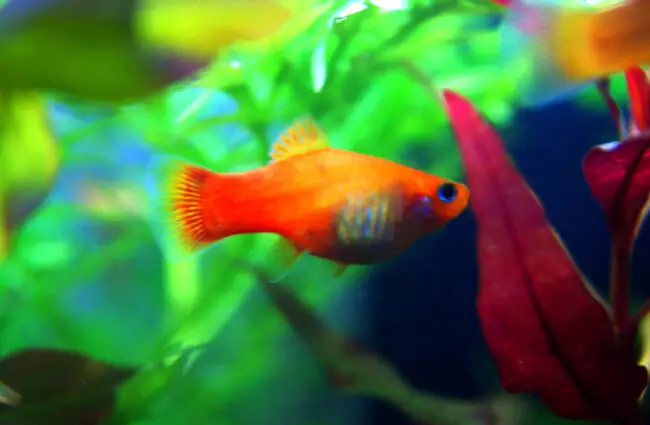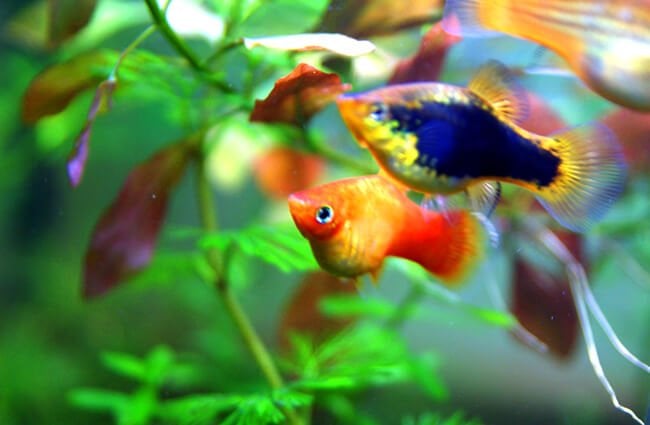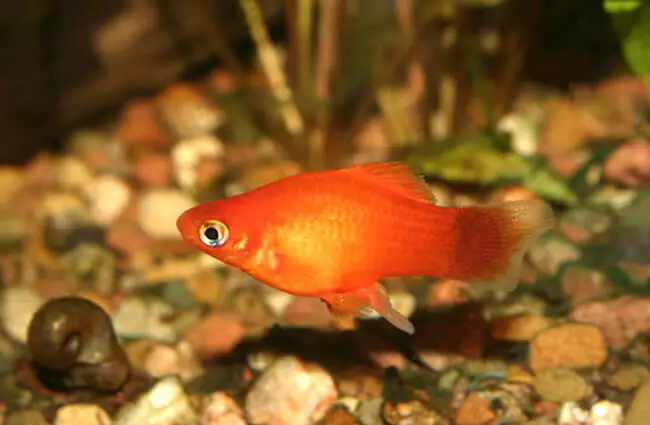The world of freshwater fishes is brimming with diversity, and among the most captivating and readily recognized are platies. These small, colorful fish are a favorite among aquarium enthusiasts, but their story extends far beyond glass tanks. This comprehensive guide delves into the natural history, behavior, and ecological role of platies, offering insights for students, animal lovers, aspiring zoologists, and anyone curious about these charming creatures.
What are Platies?
Platies, scientifically classified under the genus Xiphophorus, are members of the Poeciliidae family—livebearers closely related to guppies, mollies, and swordtails. Native to Central America and Mexico, these fish exhibit a remarkable range of colors and patterns. Wild platies tend to be more subtly colored, offering camouflage in their natural habitats, but selective breeding in captivity has produced an astonishing array of vibrant hues, including reds, oranges, yellows, blues, and blacks.

Physical Characteristics
Adult platies typically reach lengths of 2 to 3 inches. They possess a laterally compressed body shape, contributing to their graceful swimming style. A distinctive feature is their anal fin, which is modified in males to form a gonopodium—a rod‑like structure used for internal fertilization. This adaptation is characteristic of all livebearers. The scales are small and often iridescent, adding to their visual appeal.
Habitat and Distribution
In the wild, platies inhabit warm, slow‑moving freshwater environments. They are commonly found in rivers, streams, canals, and springs of Mexico and Central America, specifically in areas encompassing parts of Mexico, Guatemala, Honduras, and Belize. These habitats are typically characterized by abundant vegetation, offering shelter and a source of food. The water is generally soft to moderately hard, with a pH ranging from 7.0 to 8.0. They prefer temperatures between 72 and 82 degrees Fahrenheit.
Evolutionary History
The evolutionary origins of platies can be traced back to the Miocene epoch, roughly 5 to 10 million years ago. Fossil evidence indicates that the ancestors of modern platies were small, primitive fish that lived in freshwater habitats of Central America. Over millions of years, these fish diversified and migrated southward, eventually colonizing Central America and Mexico. Livebearing reproduction, which allows them to give birth to live young rather than lay eggs, was a key evolutionary innovation that contributed to their success. This adaptation allowed them to thrive in environments where predation on eggs was high.
Diet and Feeding Behavior
Platies are omnivorous, meaning they consume both plant and animal matter. In their natural habitat, their diet consists of algae, aquatic plants, invertebrates, insect larvae, and small crustaceans. They are opportunistic feeders, constantly grazing on available food sources. In captivity, they readily accept a variety of commercially available fish flakes, pellets, and frozen foods. Supplementing their diet with live or frozen foods, such as daphnia or brine shrimp, can enhance their color and vitality.

Mating and Reproduction
Platies are remarkably prolific breeders. As livebearers, females retain fertilized eggs internally and give birth to live young after a gestation period of approximately 28 to 30 days. A single female can produce up to 50 or more fry in a single litter. The males pursue the females, displaying vibrant colors and engaging in courtship dances. The gonopodium plays a crucial role in internal fertilization. Interestingly, females can store sperm from a single mating and produce multiple litters of fry. This phenomenon, known as spermatheca storage, allows them to reproduce even in the absence of a male. To prevent overpopulation, it is essential to provide adequate space and potentially separate males and females in a captive setting.
Ecological Role and Interactions
Platies play an important role in their freshwater ecosystems. As herbivores and detritivores, they help control the growth of algae and break down organic matter. They also serve as a food source for larger fish, birds, and other predators. Platies often coexist with other fish species, such as mollies, guppies, and cichlids, forming complex food webs. They can also interact with invertebrates, such as snails and shrimp, sharing the same habitat and food resources. In some cases, platies may exhibit territorial behavior, defending their feeding grounds or breeding sites.

Platies and Humans
Humans have significantly impacted platy populations through habitat destruction, pollution, and the introduction of invasive species. Deforestation, agricultural runoff, and urbanization have degraded freshwater ecosystems, reducing platy habitats and water quality. The introduction of non‑native species can compete with platies for resources or prey on their fry. However, platies also have a positive relationship with humans. They are popular aquarium fish, providing enjoyment and educational opportunities. Sustainable aquaculture practices can help reduce the pressure on wild populations.
Finding Platies in the Wild
If venturing into the natural habitats of platies, patience and observation are key. Look for slow‑moving streams and canals with plenty of vegetation. Platies often congregate near aquatic plants, seeking shelter and food. They are most active during the day, making it easier to spot them. Remember to respect the environment and avoid disturbing their habitat. Responsible ecotourism can help protect platy populations and promote conservation efforts.
Caring for Platies in Captivity
Platies are relatively easy to care for in a home aquarium, making them an ideal choice for beginners. A 20 gallon tank is suitable for a small group of platies. The water should be kept clean and well filtered, with regular partial water changes. Provide plenty of aquatic plants and decorations to create a natural environment. Feed them a varied diet of high quality fish flakes, pellets, and frozen foods. Monitor the water parameters regularly to ensure optimal conditions. Be prepared for frequent breeding, and consider providing a separate breeding tank to protect the fry. Common diseases include ich and fin rot, which can be treated with appropriate medications.

Encountering Platies in the Wild: What to Do
If you encounter platies while hiking or exploring near freshwater habitats, observe them from a distance and avoid disturbing their environment. Do not attempt to capture or handle them. Report any signs of pollution or habitat degradation to local authorities. Promote responsible ecotourism and support conservation efforts to protect platy populations and their ecosystems.
Fun Facts about Platies
- Platies can hybridize with other closely related species, such as guppies and swordtails, resulting in interesting color patterns and traits.
- The name “platy” comes from the Greek word “platys,” meaning “flat,” referring to their laterally compressed body shape.
- Platies have excellent eyesight and can distinguish between different colors and shapes.
- They communicate with each other through body language and chemical signals.
- Some platy varieties have been selectively bred to develop unique fin shapes and patterns.
Advanced Topics for Aspiring Zoologists
For those interested in a deeper understanding of platies, research areas include the genetics of color and pattern variation, the evolution of livebearing reproduction, the ecological interactions between platies and other species, and the impact of environmental pollution on their health and survival. Studies on platy behavior, communication, and social structure can also provide valuable insights into their biology. Advanced research techniques, such as molecular genetics, ecological modeling, and behavioral observation, can be employed to investigate these topics.


In conclusion, platies are fascinating creatures with a rich natural history and ecological role. Their vibrant colors, prolific breeding habits, and adaptability have made them popular aquarium fish and a captivating subject for scientific study. By understanding their biology, habitat, and conservation needs, we can ensure their survival and appreciate the beauty of these remarkable fish for generations to come.

![Red Angus Closeup of a beautiful Red Angus cowPhoto by: U.S. Department of Agriculture [pubic domain]https://creativecommons.org/licenses/by/2.0/](https://animals.net/wp-content/uploads/2020/03/Red-Angus-4-238x178.jpg)




![Red Angus Closeup of a beautiful Red Angus cowPhoto by: U.S. Department of Agriculture [pubic domain]https://creativecommons.org/licenses/by/2.0/](https://animals.net/wp-content/uploads/2020/03/Red-Angus-4-100x75.jpg)

